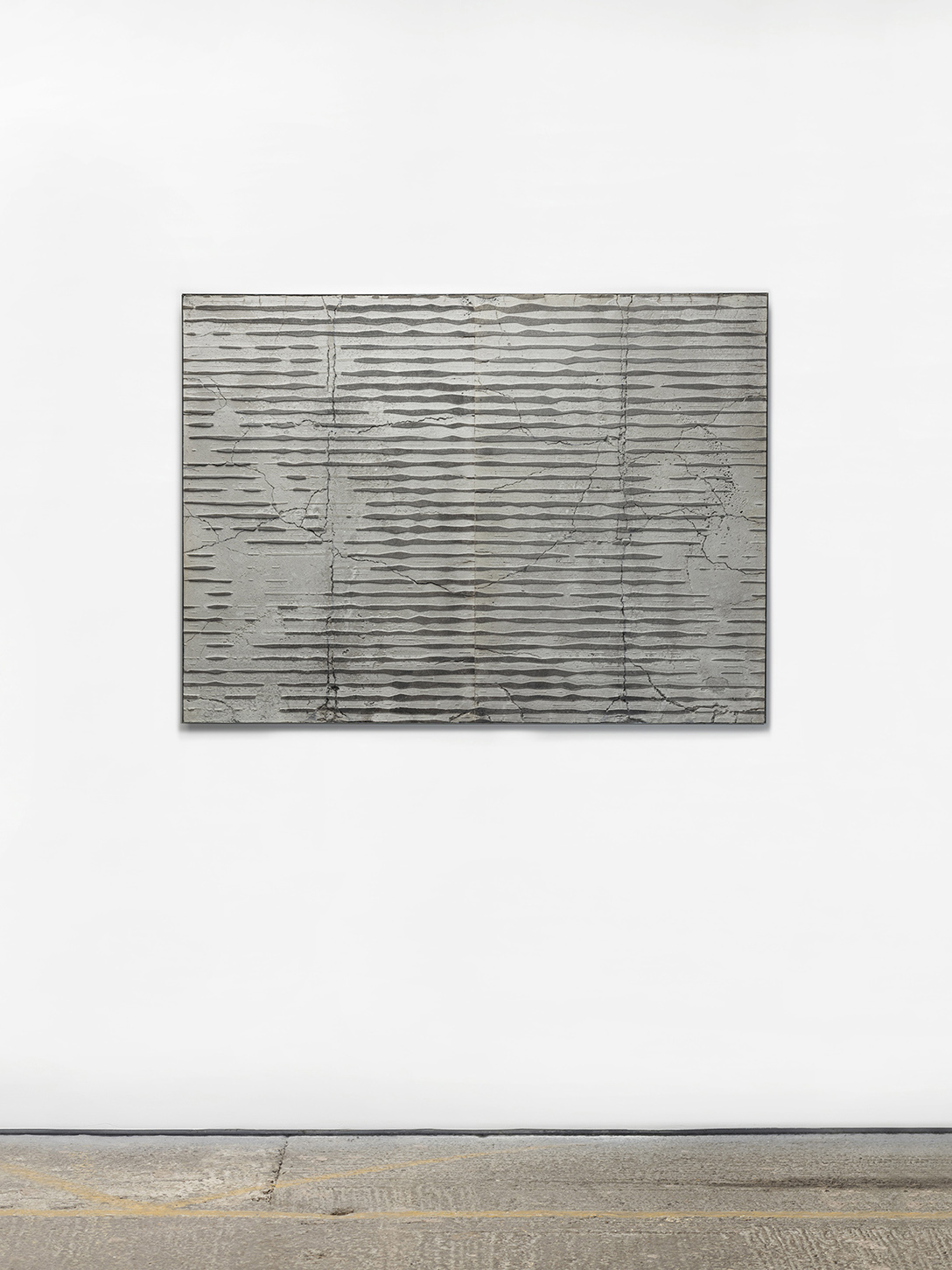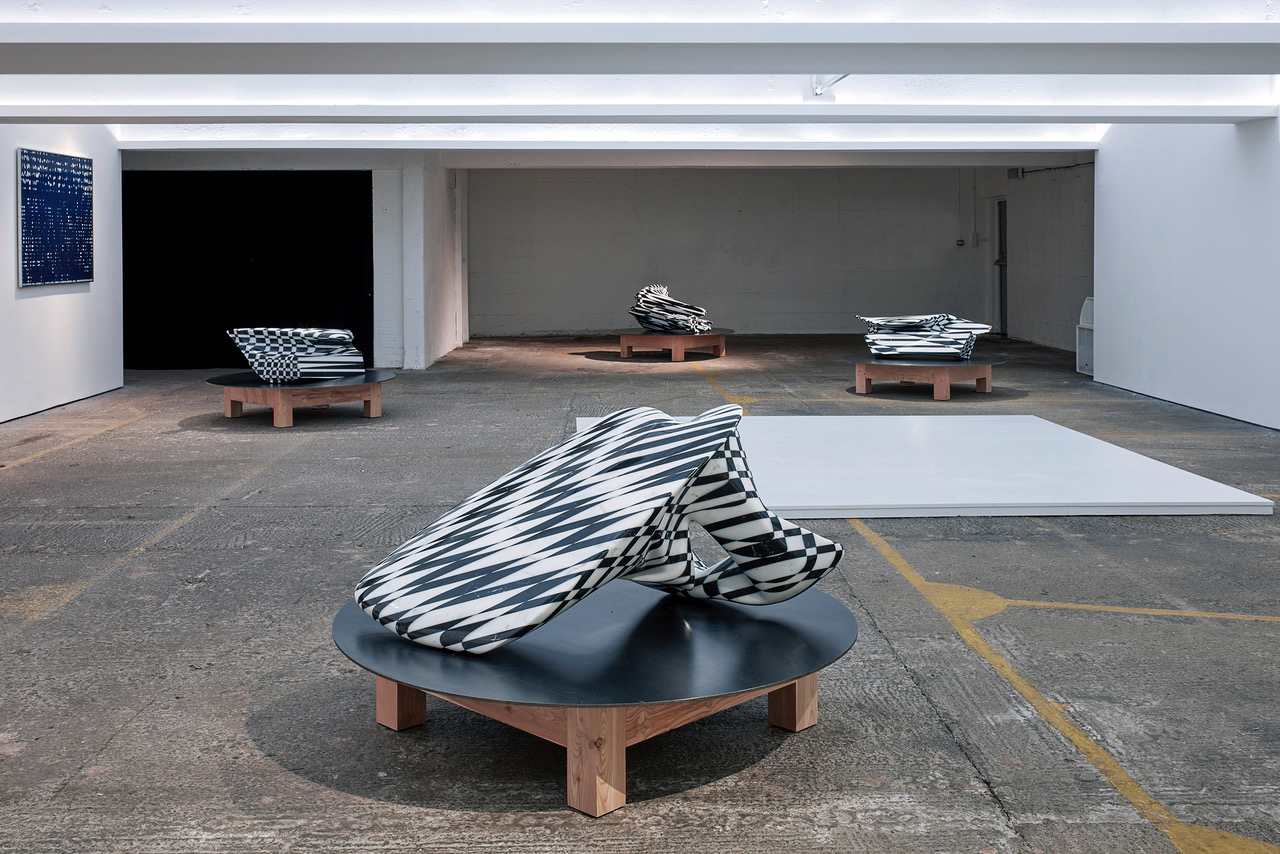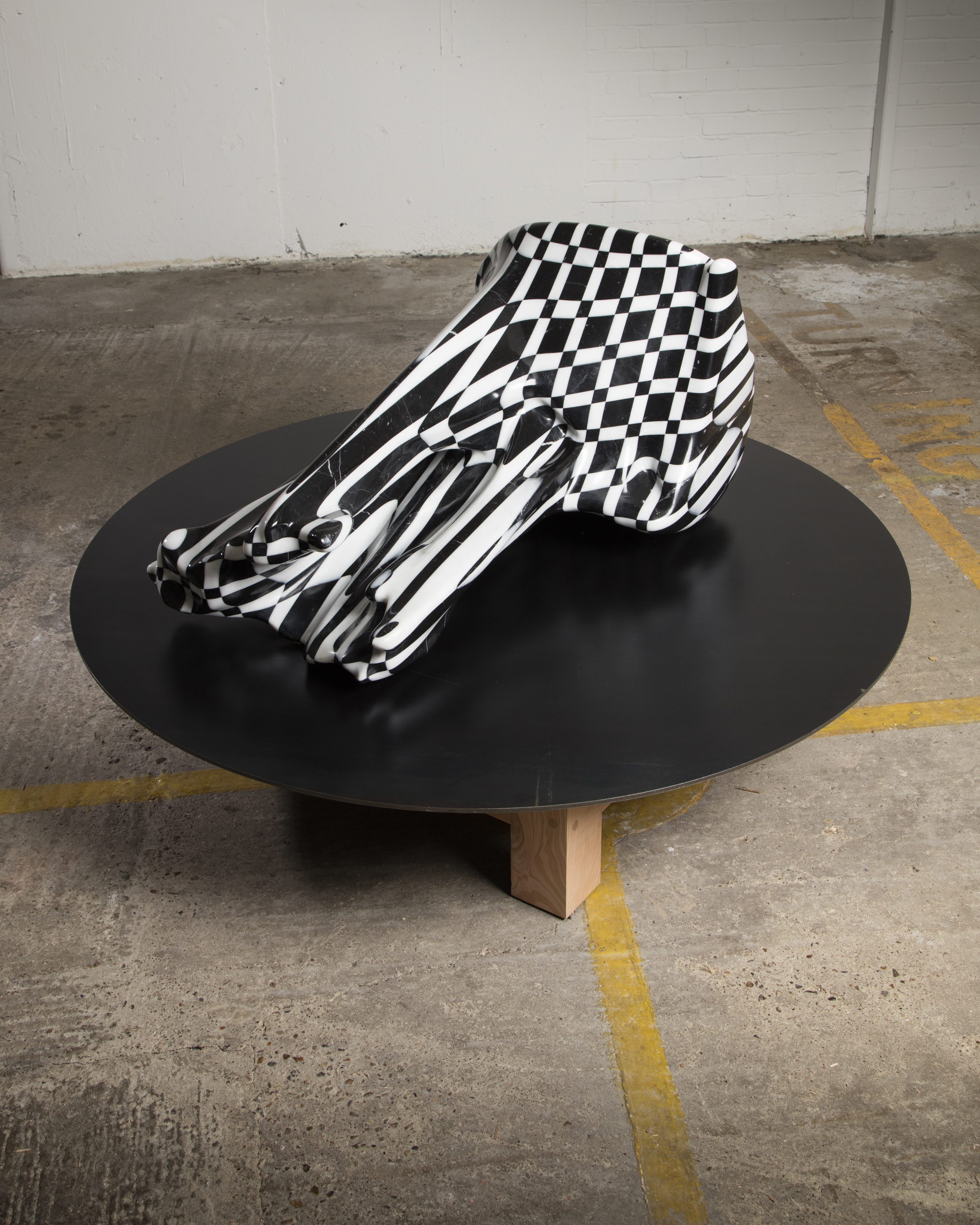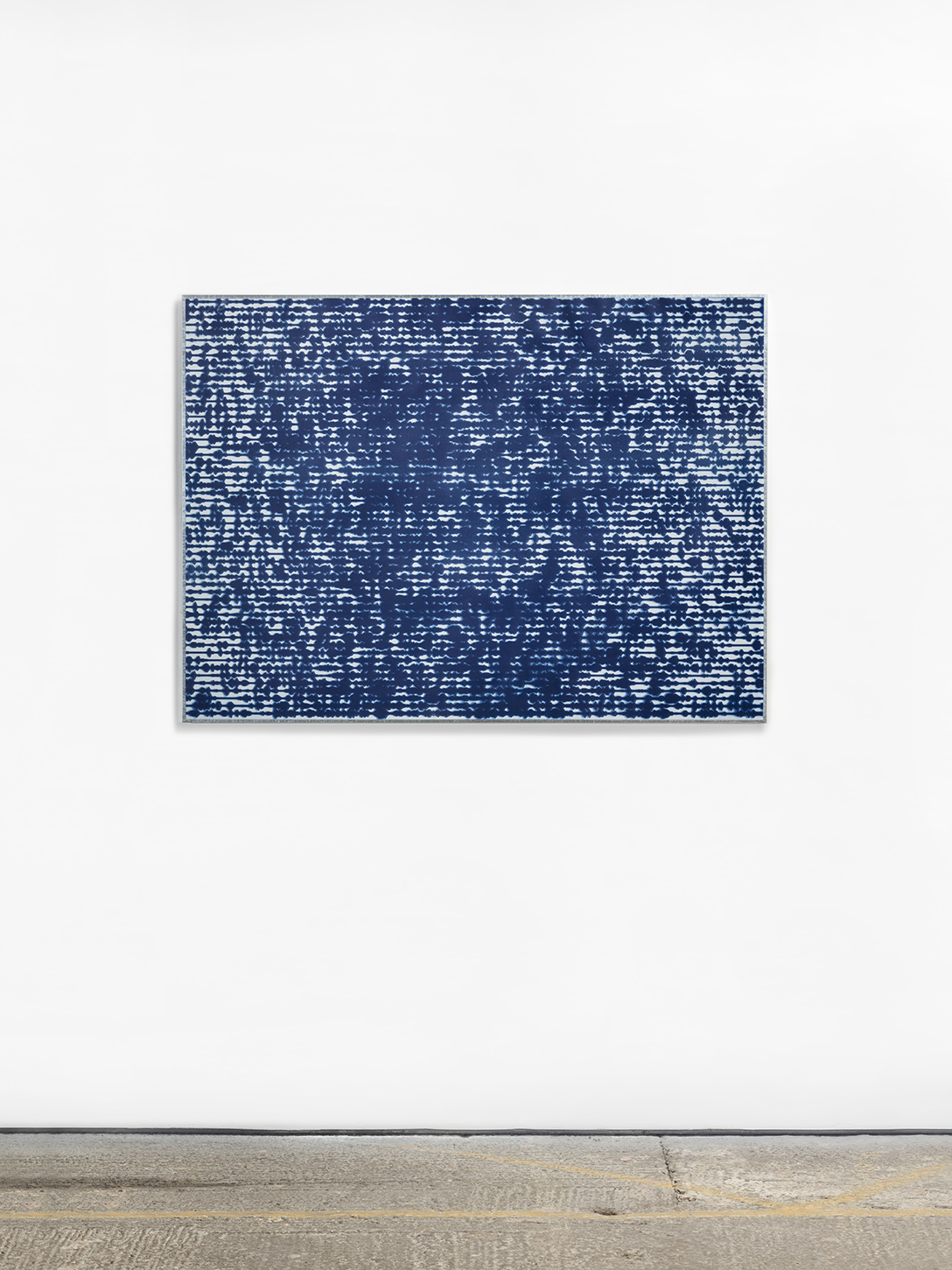Mat Chivers’s practice often brings together analogue and digital, natural and manmade, creating works which blur the boundaries between these apparently binary terms rather than emphasise them. The British artist is currently showing Harmonic Distortion at London’s PM/AM.
The central sculptures in Mat Chivers’s Harmonic Distortion are a set of nero marquina and thassos marble forms of the same name, which create an ideal balance between natural and manmade—ideal, because the combination is so smooth that the pieces evolve past a simple illustration of “old” and “new”, “natural” and “manmade”, and instead become complex forms, the source of which takes a moment’s contemplation (or further reading).
The lines and sections that make up the sculptures are perfectly straight, so clean that their existence only seems possible with the use of new technology. The liquid nature of the shapes as a whole–in contrast to the pixel-like patterning–calls to mind 3D modelling software; materials losing their earthly qualities and evading the usual rules that govern them. The marble used is either solid black or white, with no actual marbling to give the game away and on first glance, these could be made from glass, plastic or a range of manmade substances.
The forms themselves have come from “sets of data relating to the physics of wave and cloud formations”—again, we see the natural world harnessed and reformed by modern tech—as well as the cycles of breaking waves. The choice of marble is also intended to reflect back to the sea, the material itself originating from the ocean. The sculptures have gone through an initial robotic milling process and are then formed by hand. In all, they exist as hybrids of many things, illusory works which refuse to be defined in simple terms.
Alongside these, a series of six blue or grey wall-based works, (It’s Not) Black & White, are named after locations–Aberystwyth, Morocco, Galapagos and so on–which refer back again to the ocean and cloud formations, some to threatened eco systems. The grey works are formed from sea salt, while the blue works are cyanotype prints; earthly materials once more merging with digital means.
The gallery, a large former carpark which eschews the typical white cube format, also provides a space for performance. The remnants of opening night’s Circle Drawing sit in the centre, marks left behind on a white shallow platform and a structure suspended above. The performance takes its cue from Shibari—a form of Japanese erotic bondage which leaves the body reformed and contorted. Instead of traditional bondage rope, fibre optic cabling is used here by two female performers, and the performer who is bound attempts to draw a circle on the floor with raw ochre pigment as the performance ensues. This is a fitting addition to a show which appears so controlled, yet refers at many points to a chaotic and ever-changing natural world, changing, in no small part, due to our involvement.
‘Harmonic Distortion’ is showing at PM/AM until 28 February










